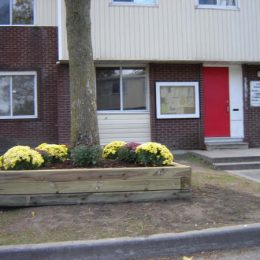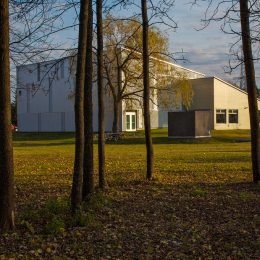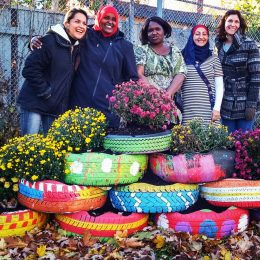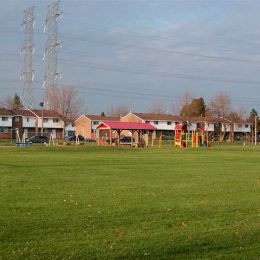NCLB 2006-2015
NCLB’s Approach
Building Safe and Vibrant Neighbourhoods
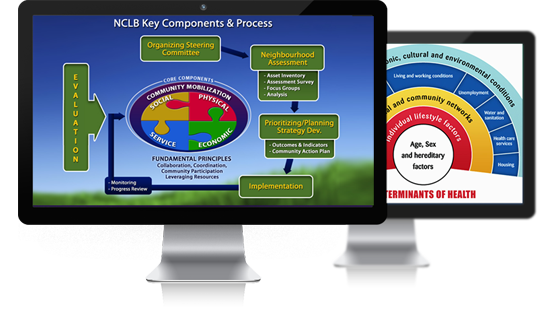
No Community Left Behind helps communities in getting consistently engaged in planning and implementation for local development with the help of all service providers.
The NCLB approach and process strengthen community capacity to increase the quality of life, and promote long-term community health and resilience.
In communities where crime is a major issue of concern, the strategy involves a two-pronged approach: law enforcement agencies and partner agencies cooperate in removing criminal elements and public agencies and community-based organizations collaborate to invest in much-needed human services, including prevention, intervention, treatment, and neighborhood restoration programs. A community-oriented policing component bridges these two prongs of the approach.
Communities are always different and dynamic. Major issues of concern vary from community to community. The NCLB strategy helps the community put an ongoing process in place, whereby they come up with a community action plan every year after an assessment. The plan is approved by the Steering committee and a systematic review takes place after implementation of identified activities for addressing the prioritized problems.
In short, the purpose of No Community Left Behind is to implement a comprehensive approach towards social development approach at local level which also helps in crime prevention where crime is the major concern. This approach is being successfully applied to address the roots of the problems in the partner communities and improve community members’ overall quality of life. NCLB’s community engagement process is comprised of:
- Organising a steering group
- Conducting needs assessment
- Prioritising Issues
- Action Planning
- Implementation
- Monitoring and evaluation
- Review & Readjustment
- Continuing the cycle
LEAD COMMUNITIES
Community House Partners
The following neighbourhoods played a key role in the initial implementation and role-modelling the NCLB strategies from 2005 to 2007.
NCLB AT A GLANCE
Who we are & what we do
The vision of No Community Left Behind is to keep people well; to enable them to live, work, and raise their families in a safe and prosperous environment.
This vision is achieved through:
– Developing a comprehensive community-based strategy for addressing social determinants of health, while working to address major risk factors that lead to fear, isolation and crime;
Mobilizing community members and service providers to assist each other in addressing the community identified and prioritized problems;
– Assisting concerned service agencies to respond to social/community/health service needs; and
Engaging and supporting community members to participate more fully in neighbourhood planning and decision making processes.
Determinants of health are addressed at the neighbourhood level. The positive outcomes of this initiative highlight the impact of holistic community based initiative that include multiple partnerships and a balance between broad based and neighbourhood specific planning.
The pilot phase of NCLB was successfully completed in Banff Avenue community in 2006.
Since August 1, 2006, the program has been extended to 8 neighbuoring communities in Albion-Heatherington, Heather Manor, Confederation Court, Russell Heights, Blair Court, Fairlea, Ashgrove, Shearwater.
No Community Left Behind was launched in 2005 as a social development initiative with the objective to prevent crime and address social determinants of health through a collaborative approach and integration of services at the neighbourhood level.
Over the past ten years, No Community Left Behind has become a strategy development process at the neighbourhood level in which community development specialists, community policing professionals and neighbourhood activists and almost all concerned service providers collaborate to address factors that lead to communities’ vulnerability, crime, victimization, fear of safety, and social exclusion.
The NCLB strategy development process leads to strategic action vis-a-vis community development, community-partners engagement, exploring opportunities for local development and adopting new ways to building stronger, healthier and safer communities.
Working in close partnership with various other agencies, South East Ottawa Community Health Centre (SEOCHC) has effectively engaged and supported communities to restore their sense of safety and pave the way for effective service delivery. NCLB has now become a core component of the City of Ottawa’s Community Development Framework (CDF) for community engagement at the grassroots level.
In the South East Ottawa, the program was initially funded by National Crime Prevention Centre. Later, United Way provided funding for coordination and program support until 2011. Crime Prevention Ottawa also provided generous support in the initial implementation of the NCLB approach. Currently the funding for activities is supported through the Community Development Framework allocations process. Ottawa Police, Ottawa Community Housing (OCH) Tenants and Community Workers (TCWs) of South District and Community House Directors continue to work closely with the staff assigned to this initiative. There are many other partners engaged in the NCLB process.



